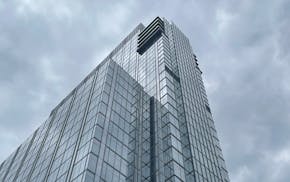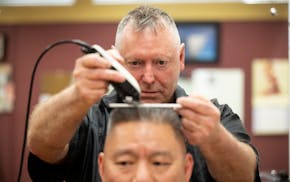After years of planning, construction starts this week on a $32.5 million renovation and expansion of the half-century-old Minneapolis American Indian Center in south Minneapolis.
This is a signature project for an organization that serves 4,500 Native Americans and an additional 10,000 visitors annually who participate in community events, Two Rivers gallery art, shop Woodland Crafts and eat at Gatherings Café.
It also should be a nice boost for the E. Franklin Avenue corridor at Bloomington Avenue.
So will a $50 million project planned by Wellington Management and Native American Community Clinic (NACC) a few blocks west on Franklin between the Aldi grocery and Ancient Traders Market. Wellington confirmed it plans to demolish the current small strip mall owned by NACC and build a larger, two-level health clinic with several stories of housing.
Wellington President David Wellington projects construction in 2023 and 2024.
With these and other investments along the corridor, the stretch of Franklin is no longer better known for decrepit housing and shuttered storefronts.
Mary LaGarde, a White Earth Nation member and executive director of Minneapolis American Indian Center, has raised $29 million so far, thanks to a committed board and capital campaign committee that attracted about two dozen investors, governments, foundations, businesses and an anonymous donor who pledged $2 million.
The new complex will reflect the transition of the center from a 1970s-era social services center to a centerpiece of Indian food, art, health programs, youth activities and commerce.
"They all stuck with this and drove it," said LaGarde of the investors and stakeholders. "The building has needed an upgrade for years. When it rains, we catch the water in buckets."
The center is integral to the Native American "cultural corridor" on Franklin, as well as growing Black and Latino enterprises.
The architect of the MAIC redevelopment, as well as the NACC-Wellington commercial-residential project is Sam Olbekson, also a member of White Earth and MAIC's board president. Olbekson, 51, grew up near the center and graduated from Roosevelt High School.
He also is the designer of the affordable housing complex Mino-Bimaadiziwin Apartments for 110 families and individuals at Cedar and Franklin, which includes a mental health clinic and supportive services. The complex is across from where one of the larger homeless camps of recent years was located and provided housing for some of those who lived there.
Mayor Jacob Frey advanced $1.5 million of 2021-22 federal economic recovery funds for the MAIC project. The city also provided $1 million in funding to rebuild Migizi Communications, which was destroyed in the 2020 riots after George Floyd's death, and another million for 16 other Indian nonprofits.
"Native American nonprofits put available resources into helping people rather than funding their capital needs," said Minneapolis economic development chief Erik Hansen. "The city's support for these three critical organizations helps to modernize their facilities and bolster their capacity to serve.''
MAIC also received a piece of Xcel Energy's $9 million "Resilient Minnesota" project, which provides new HVAC systems, along with solar and battery power. Currently, MAIC operates on inefficient 1970s heating and cooling systems. The new power system also will allow neighbors to congregate during power outages for food, shelter and communications.
The other two nonprofits benefiting from the program are Sabathani Community Center, also in south Minneapolis, and Renewable Energy Partners on the North Side. Chris Clark, president of Xcel's Minnesota operations, said these investments will "advance equity, invest in BIPOC communities, diversify our workforce and integrate more distributed energy resources that deliver benefits" across the city.
Franklin and the Phillips neighborhood long have been populated by immigrants, from Scandinavian settlements of the late 19th century to Hispanic, southeast Asian and East African immigrants. Thousands of American Indians left reservations for work in the 1950s. Many of their descendants from 43 Midwest tribes still split time between the city and reservations.
Three years ago, Robert Lilligren, CEO of the Native American Community Development Institute (NACDI) and a former City Council member, talked about a vision that's being fulfilled.
"A Native American cultural corridor that leverages the historic association with the Native community," Lilligren said. "We will create a destination between downtown and the airport that takes advantage of growing interest in Native American culture."
Near MAIC, American Indian Community Development Corp. and Project for Pride in Living (PPL) since 2015 have constructed 117 units of supportive Anishinaabe housing.
The nearby National Norwegian Center in America, which sits in a once-abandoned bank building, also is expanding through an event center addition to its Norway House.
Christina Carleton, the Norway-born executive director of the center, and LaGarde of MAIC share a vision of E. Franklin cultures and institutions supporting each other through commercial and cultural exchanges.
"We have walked this journey of growth together — which is important to the growth and success of this neighborhood," Carleton said. "I look forward to supporting Mary and her team as she supported us through [our] construction process."

St. Anthony: 'Patient' investing paying off for St. Paul's Hill Capital

Jennifer Smith, leader of Burnsville's Innovative Office Solutions, has died

St. Anthony: Medical professions in Minnesota need more people of color in their ranks


